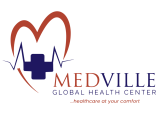Why Affordable Healthcare Should Not Mean Compromised Quality
Introduction
Healthcare is a fundamental right, not a privilege. Yet, in many parts of the world, access to quality healthcare is often dictated by financial capability. The misconception that affordable healthcare equates to subpar services has persisted for too long. At MedVille Global Health Center, we firmly believe that cost-effective healthcare should not compromise quality, safety, or patient satisfaction. This article explores why affordability should go hand-in-hand with medical excellence and how it can be achieved.
The Myth of Affordability vs. Quality
Many people assume that lower healthcare costs mean substandard facilities, outdated medical equipment, or poorly trained professionals. However, this is not necessarily true. With the right strategies, healthcare providers can deliver top-tier medical services at affordable rates. Countries like India, Thailand, and Rwanda have demonstrated that high-quality care can be both accessible and affordable through smart healthcare policies and innovative care models (World Health Organization, 2022).
Key Factors That Enable Affordable, High-Quality Healthcare
1. Efficient Resource Management
Hospitals that streamline their resources—by eliminating waste, negotiating better supply contracts, and using technology to optimize operations—can significantly reduce costs while maintaining quality.
2. Government and Private Sector Collaboration
Public-private partnerships help bridge financial gaps, ensuring that healthcare institutions receive funding while upholding high standards of care.
3. Adoption of Innovative Medical Technology
AI-powered diagnostics, telemedicine, and electronic health records (EHRs) enhance efficiency, reduce manual errors, and improve patient outcomes—all at lower costs (Harvard Medical School, 2023).
4. Preventive Healthcare Focus
Investing in preventive care reduces the burden of chronic diseases, which are costly to treat. Regular screenings, vaccinations, and lifestyle coaching can cut healthcare expenses without affecting service quality.
5. Skilled Workforce and Continuous Training
Affordable healthcare does not mean employing underqualified personnel. Healthcare institutions must prioritize ongoing training and development to maintain excellence in patient care.
Real-Life Example: How MedVille Global is Setting the Standard
At MedVille Global Health Center, our goal is to make healthcare accessible, affordable, and world-class. We achieve this by:
- Offering a wide range of specialist services (Cardiology, Surgery, ICU, Pediatrics, etc.) at competitive rates.
- Investing in modern medical technology to ensure accurate diagnosis and efficient treatment.
- Partnering with health insurance providers and NGOs to subsidize healthcare costs for low-income patients.
- Training our medical staff regularly to stay updated with global healthcare best practices.
Final Thoughts: The Future of Affordable, Quality Healthcare
The idea that affordability must come at the cost of quality is outdated and flawed. Through strategic investments, innovative healthcare solutions, and strong public-private partnerships, we can ensure that every African has access to world-class healthcare without financial hardship.
At MedVille Global, we remain committed to delivering exceptional healthcare services at the most affordable rates—because good health should not be a luxury.
What’s Next?
Interested in more healthcare insights? Stay tuned for upcoming topics:
🔹 The Role of AI in Modern Healthcare
🔹 How Preventive Healthcare Saves Lives and Reduces Costs
🔹 The Future of Telemedicine in Africa
💬 Join the conversation! What are your thoughts on affordable yet high-quality healthcare? Drop a comment below.
📌 Follow us for more healthcare updates!



